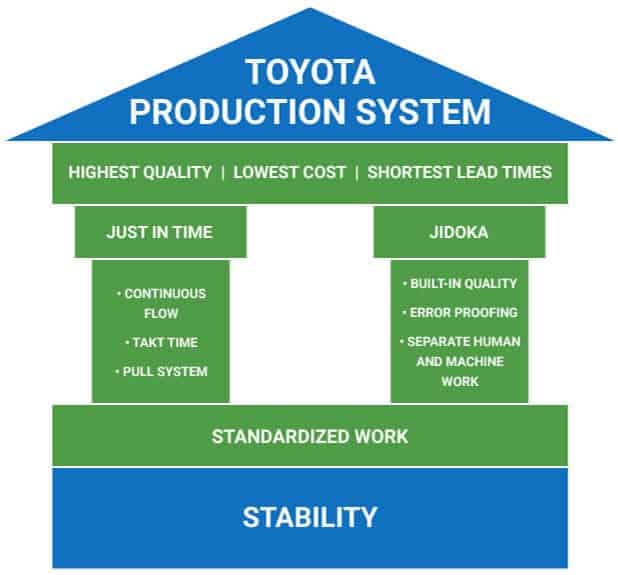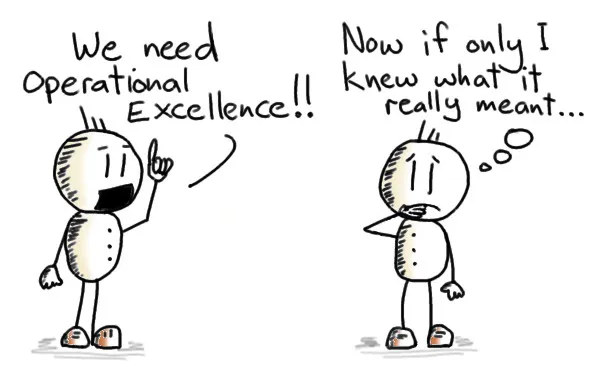tired of watching your business goals fade into the distance
Are you tired of watching your business goals fade into the distance due to operational inefficiencies?
Welcome to “Perfect Planning: An Insight into Operational Excellence for Achieving Business Goals.” This piece is your beacon of hope, designed to shed light on the crucial role of planning for driving operational excellence and turning business aspirations into reality.
We’ll walk together, traversing this intricate terrain, uncovering strategies, techniques and best practices to align your operations with your business vision. Whether you’re a start-up figuring out the ropes or an established firm struggling with stagnation, this article will be your blueprint for success. Brace yourself for an enlightening journey towards operational proficiency and enjoy the taste of realized dreams.
Here’s to making those mirages a tangible reality! The Importance of Operational Excellence for Business Goals Establishing a framework for operational excellence is akin to laying the foundation of a skyscraper. It is the fundamental requirement for a robust, efficient, high-performing organization. Business goals are the beacon that guides a company’s actions and decisions, and operational excellence is the vehicle that gets you there. Without it, the journey is arduous, costly, and often unsuccessful.
Operational excellence is the key that opens the door to increased productivity, improved efficiency, lower operating costs, and enhanced customer satisfaction. Businesses can achieve higher success and profitability by streamlining processes, eradicating waste, and fostering a culture of continuous improvement.
Furthermore, operational excellence aligns the entire organization towards common objectives. It creates a sense of unity and purpose among employees, enhancing their engagement and commitment. With everyone rowing in unison, the ship of your business can navigate the tumultuous waters of the market and reach the desired destination – your business goals.

The Pillars of Operational Excellence
Just like a building rests on its pillars, operational excellence is underpinned by certain critical elements. These pillars, if well-embedded in the organization’s fabric, support its weight and enable it to reach greater heights. Let’s delve into these pillars and understand their importance.
The first pillar is Leadership.
Effective leadership steers the organization towards operational excellence. Leaders set the vision, define the objectives, and create a culture encouraging continuous improvement. They inspire, motivate, and empower employees, fostering a conducive environment for operational excellence.
The second pillar is Strategy.
A well-crafted strategy provides a roadmap for achieving operational excellence. It outlines the goals, identifies the means to achieve them, and provides a framework for decision-making. A good strategy is flexible, adaptable, and aligned with the business objectives.
The third pillar is Processes.
Efficient and streamlined processes are the lifeline of operational excellence. They eliminate wastage, reduce costs, and improve productivity. Businesses should constantly review and improve their processes to stay competitive and achieve operational excellence.
Operational Excellence Strategies
Developing and implementing operational excellence strategies is critical to achieving business goals. These strategies provide a clear business path and a framework for continuous improvement. Here are some effective strategies to consider.
Lean management
It is a strategy that aims to reduce waste and improve efficiency in operations. It focuses on streamlining processes, eliminating non-value-adding activities, and enhancing customer value. Lean management fosters a culture of continuous improvement, driving operational excellence.
Six Sigma
It is another effective strategy focusing on reducing process variability and improving quality. It uses statistical tools to identify and eliminate defects, leading to improved efficiency and customer satisfaction. Implementing Six Sigma can significantly enhance operational performance and help achieve business goals.
Business Process Reengineering (BPR)
It is a radical strategy that redesigns business processes for dramatic performance improvements. BPR can lead to substantial cost savings, improved quality, and enhanced customer satisfaction, driving operational excellence.


Implementing Operational Excellence in Your Business
Implementing operational excellence is a journey that involves several steps. It begins with understanding the current state of operations and identifying improvement areas. Businesses need to map out their processes, identify bottlenecks, and pinpoint sources of waste.
The next step
is to develop and implement improvement plans. This involves redesigning processes, implementing new technologies, training employees, and fostering a culture of continuous improvement. It requires commitment from all levels of the organization and effective change management.
Monitoring and evaluation
are critical aspects of the implementation process. Businesses should regularly monitor their performance, measure the impact of their improvement efforts, and adjust their strategies as needed. This ensures that the journey towards operational excellence remains on track and delivers the desired results.
Case Studies: Operational Excellence in Action
Several businesses have successfully leveraged operational excellence to achieve their goals. Let’s take a look at some of these case studies.
Toyota is a classic example of operational excellence. The automobile giant’s Toyota Production System (TPS) is a model of efficiency and continuous improvement. TPS focuses on eliminating waste, improving processes, and enhancing quality, leading to higher productivity and customer satisfaction.
General Electric (GE) is another company that has reaped the benefits of operational excellence. GE improved its quality, reduced costs, and enhanced customer satisfaction through its Six Sigma program. The program led to significant savings and helped GE achieve its business goals.
Amazon is a prime example of operational excellence in the digital age. Through its relentless focus on customer satisfaction, efficient processes, and continuous innovation, Amazon has transformed the e-commerce industry and achieved unparalleled success.


Tips for Achieving Operational Excellence
Achieving operational excellence requires a systematic approach and a commitment to continuous improvement. Here are some tips to help you on this journey.
First
Create a culture of continuous improvement. Encourage employees to identify and eliminate waste and reward them for their efforts. This will foster a sense of ownership and commitment towards operational excellence.
Second
Invest in training and development. Equip your employees with the skills and knowledge they need to improve processes and enhance performance. Training is a critical component of operational excellence.
Third
Leverage technology. Implementing the right technology can streamline processes, reduce errors, and improve efficiency. Whether it’s automation, data analytics, or artificial intelligence, technology can be crucial in achieving operational excellence.
Pitfalls to Avoid in Operational Excellence Implementation
While operational excellence can deliver significant benefits, there are certain pitfalls that businesses should avoid. These include a lack of clear goals, resistance to change, and inadequate leadership commitment.
Lack of clear goals can derail the operational excellence journey. Businesses should define their objectives, set measurable targets, and align their strategies accordingly. This provides a clear direction and helps maintain focus.
Resistance to change is a common obstacle in operational excellence implementation. Businesses should manage change effectively, communicate the benefits of operational excellence, and involve employees in the process. This can mitigate resistance and facilitate smooth implementation.
Inadequate leadership commitment can impede operational excellence. Leaders should champion the cause, demonstrate commitment, and lead by example. Their involvement can inspire employees and drive operational excellence.
Training and Resources for Operational Excellence
Training and resources are vital for operational excellence. They equip employees with the necessary skills and knowledge and guide for implementing active excellence strategies.
Several organizations offer training programs in operational excellence methodologies like Lean, Six Sigma, and BPR. These programs provide a thorough understanding of these methodologies’ concepts, tools, and techniques.
There are also numerous books, online resources, and software tools available that can assist in operational excellence implementation. These resources provide valuable insights, practical tips, and helpful templates to guide businesses on their active excellence journey.
Conclusion: The Future of Operational Excellence Operational excellence is not a destination but a journey of continuous improvement. As the business landscape evolves, so does the operational excellence concept. It is about streamlining processes, reducing waste, innovating, adapting, and staying ahead of the competition.
The future of operational excellence lies in digital transformation. Advanced technologies like artificial intelligence, robotics, and data analytics will redefine operational excellence. These technologies will enable businesses to achieve higher efficiency, agility, and customer satisfaction.

In conclusion,
operational excellence is the key to achieving business goals. It enables businesses to maximize performance, deliver superior customer value, and stay competitive in the marketplace. So, embark on this journey of operational excellence and turn your business goals from a mirage into a tangible reality.
